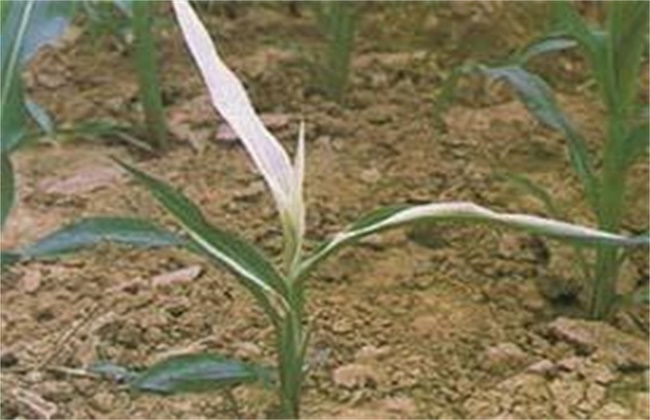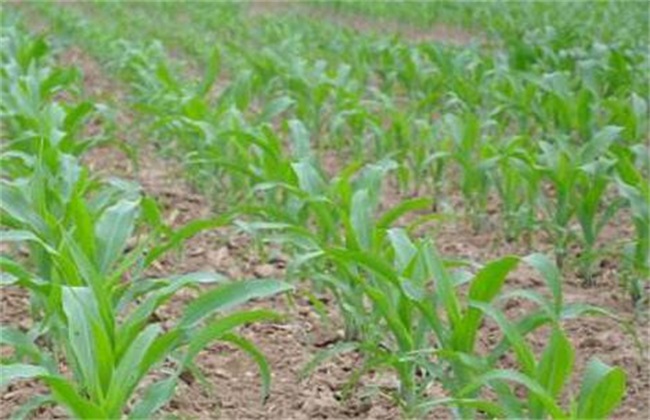Introduction of fertilization methods for Spring Maize
With the gradual rise in temperature, most areas have also begun to enter the time for planting spring corn. Spring corn planting, its fertilization work is certainly indispensable. Rational fertilization can effectively improve the yield and quality of spring maize, which is very beneficial to the growth of spring maize. So how to fertilize spring corn? Today, the editor has brought you an introduction to the method of fertilization for spring corn. Let's take a look at it.

1. Principles of fertilization
Before we fertilize spring corn, it is best to carry out soil testing and formula fertilization in order to determine the proportion of nutrients such as nitrogen, phosphorus and potassium in fertilizer. When applying nitrogen fertilizer, it should be applied step by step, and for the fields with higher yield, the proportion of potash fertilizer should be increased appropriately. Then it is necessary to apply seed fertilizer and base fertilizer reasonably according to climate change, soil fertility and other factors. Increase the proportion of organic fertilizer, if the straw is returned to the field for a long time, the amount of fertilizer can be reduced. At the same time, attention should be paid to the application of trace elements such as sulfur and zinc, and alkaline fertilizer should be applied properly if the soil is too sour.
2. Base fertilizer
Base fertilizer is the fertilizer we need to focus on when we plant spring corn. The base fertilizer is mainly organic fertilizer, supplemented by nitrogen and phosphorus fertilizer. Among them, all phosphate fertilizer should be applied at this stage, and the amount of nitrogen fertilizer should be kept at about 1x3 of the annual amount of fertilizer application. Potash fertilizer can also be fully applied during this period, and can also be used as a kind of fertilizer. When fertilizing, it should be combined with ploughing and soil preparation work to apply all at one time into the sowing ditch to ensure that the fertilizer is concentrated in the soil layer of 10-15 cm.
3. Planting fertilizer
In addition to base fertilizer, we also need to pay attention to growing fertilizer. Among them, there are many kinds of application methods, such as seed dressing, seed soaking and so on. If it is seed dressing, then you can choose humic acid, micro-fertilizer or biological fertilizer to dilute and dissolve it, and then spray it on the seed to keep the corn seed fully received by fertilizer and sow after it is shaded and dried. Soaking seeds is to dilute the fertilizer to an appropriate concentration, and then soak the seeds in the solution for about 10 hours. Finally, strip application can also be applied, seed fertilizer will be applied deeply, and the amount of fertilizer can be kept at about 3-4kg. However, we should pay attention to urea, ammonium chloride and so on can not grow fertilizer around.
4. Topdressing
When topdressing, all the remaining 2gam3 nitrogen fertilizer should be applied as topdressing. The topdressing of spring corn should be divided into seedling fertilizer, jointing fertilizer, ear fertilizer and grain fertilizer. Among them, attention should be paid to the application of jointing fertilizer and panicle fertilizer. Jointing fertilizer is usually applied within 10 days after jointing, which can promote the differentiation of maize stalk and young ears. Among them, there should be about 1 beat 3 nitrogen fertilizer, and the position of fertilizer should be about 6 cm away from the seedlings when fertilizing. Then apply the remaining nitrogen fertilizer as ear fertilizer, which should be applied half a month before the heading of spring corn. It can improve the quality and quantity of ear and grain, and is beneficial to the grain filling of spring maize in the later stage.
The above is a brief introduction to the fertilization methods of spring corn. That's all for today's introduction. This article is for reference only. I hope it can help you all.
Related
- The first cup of black tea in spring, the flavor and history of tea gardens in Kenya, Africa
- The computer can not only choose potatoes, but also grow tea rice. AI will grow winter oolong tea champion.
- It is not only the inflated tea bitten by insects, but also engraved with the four seasons tea in Beipu.
- The Oriental Beauty Tea Festival in Zhuxian County takes the stage at the weekend to experience the plus-size feast of oil tea.
- & quot; Oriental Beauty Tea & Exploration of Emei in Hsinchu, the hometown of quot;
- The new variety of strawberry "Tainong 1" dessert is the first choice with mellow aroma. Crimson gorgeous
- History of Tea in Taiwan: from Wild Inner Mountain to Export Tea Garden
- Two types of Taiwan Oriental Beauty Black Tea won the British three-Star Award for Childhood Tea Xiang Zhang Jiaqi changed from pilot to champion tea maker.
- Banana species and varieties: the planting history of Taiwan Xianren banana and dwarf banana is long, is banana disease resistant?
- Coffee planting Technology: Qianjie Coffee from Seedling to harvesting



